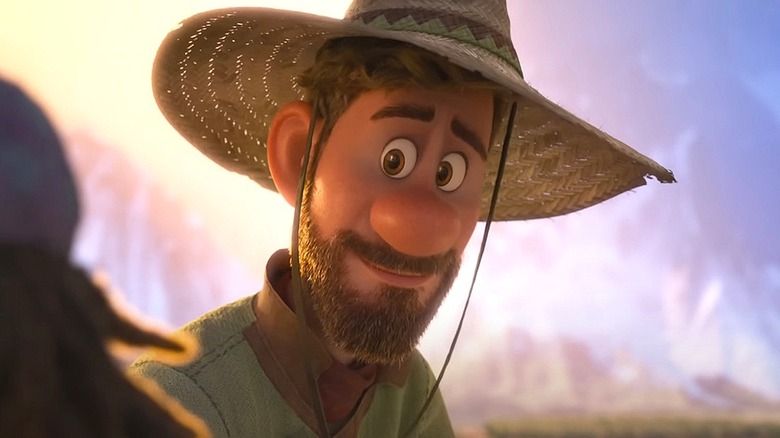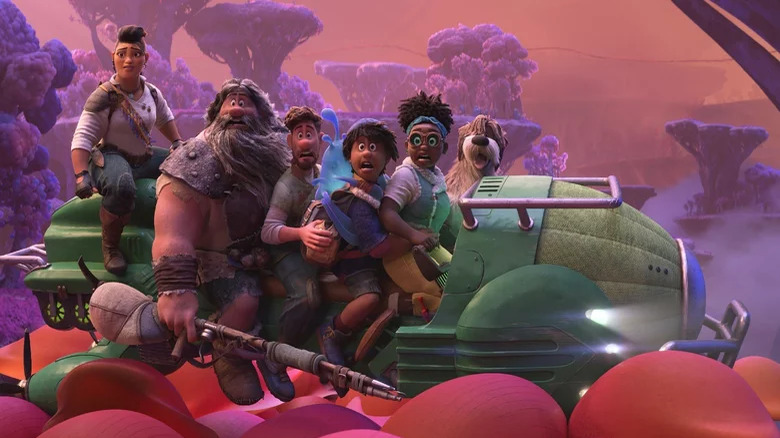How The Strange Worlds Team Designed Pre-Pando Avalonia By Working Backwards From Its Advanced Cultural State - Exclusive
Audiences can now explore the newest Disney adventure in the inventive new animated feature "Strange World." The film, set in the novel town Avalonia and its surrounding world, follows the adventurous Clade family as they have to save their town from an unprecedented new crisis. The town's life had been dramatically changed decades prior by the introduction of Pando, a plant with electrical capacities that wildly altered every aspect of Avalonian existence, enabling everything from electric lights to airships and other forms of technology. Trouble brews when the community's supply of Pando suddenly starts to lose its electrical charge, and it's up to the adventurous Clades to save... well, everyone and everything.
"Strange World" is an interesting project in that we get to watch the whole cycle of Avalonian evolution, from its pre-electricity days to its evolution with Pando's introduction, and even into what comes after the crisis is resolved. In an exclusive interview with "Strange World" director Don Hall, we discuss the interesting route the film's creators took while designing Avalonia's ever-changing society. To get to where it's going one might think they'd have to start from Avalonian square one, but the route to getting to its pre-Pando past wasn't what might be expected.
Problem solving the Avalonian way
Director Hall first notes in the interview that, consistent with the pulp influences of "Strange World," the creators took "inspiration from those early adventure novels," looking at "a lot of what the science fiction of the time or fiction of the time imagined the future was going to be like." In that early set of examples from the late 1800s to early 1900s, Hall noticed that their image of the future involved "a lot of flying things." "[It's] really interesting when you go back and look at magazines from that period," he noted, "and they're showcasing 'the vehicle of tomorrow' and all that kind of stuff — really inventive, really interesting vehicles and machines."
In keeping with those influences, Hall and his fellow "Strange World" designers "wanted to take inspiration from that and build a world that didn't have terrestrial cars." This meant a world full of airships, but in the absence of a fossil fuel society, "it was all based on dirigible technology with propellers. "That was easy enough to land on, because "it was fun, it was whimsical, and [it] evoke[d] the feeling from those early adventure and science fiction novels," Hall said.
It nonetheless presented a challenge. If the whole premise shows the pivot to a Pando-fueled world full of airships, there had to be a world before Pando. They handled the challenge like so many great problem-solvers would.
"Knowing that we were going to show what the world was like before Pando," Hall explains, "[we] backtracked." Working backwards from what they knew, the team decided "since they didn't have any of that airship technology, it was horse, and horse and buggy," immediately cueing in on the alterations in Avalonian transit, "and it was a lot more pre-Industrial Revolution Europe," which can definitely be seen in the design of the lifestyles and architecture of pre-discovery Avalonia. While it may seem logical to think through the project in Avalonia's chronological order, the crew worked backwards from Avalonia's advanced cultural state to get at where they started.
"Strange World" is now available in theaters.

